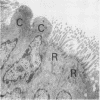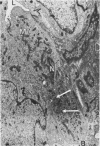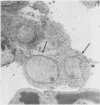Abstract
Moosavi, H., Smith, P., and Heath, D. (1973).Thorax,28, 729-741. The Feyrter cell in hypoxia. It is clear that the bronchial tree has functions beyond the mere conduction of air into the alveolar spaces. In addition to the familiar ciliated respiratory epithelial cells the bronchus is lined by non-ciliated Clara and Feyrter cells. In the present study we investigated the histological and ultrastructural features of the bronchial argyrophilic (Feyrter) cell of the neonatal rat. On electron microscopy this cell has all the features of an APUD cell which is associated with the secretion of polypeptide hormones. It bears a close ultrastructural resemblance to the chief cell of the carotid body and shows the same changes in its membrane-bound bodies on exposure to chronic hypoxia. These are strong grounds for believing that the bronchi and bronchioles have either a chemoreceptor or an endocrine function in the neonatal period.
Full text
PDF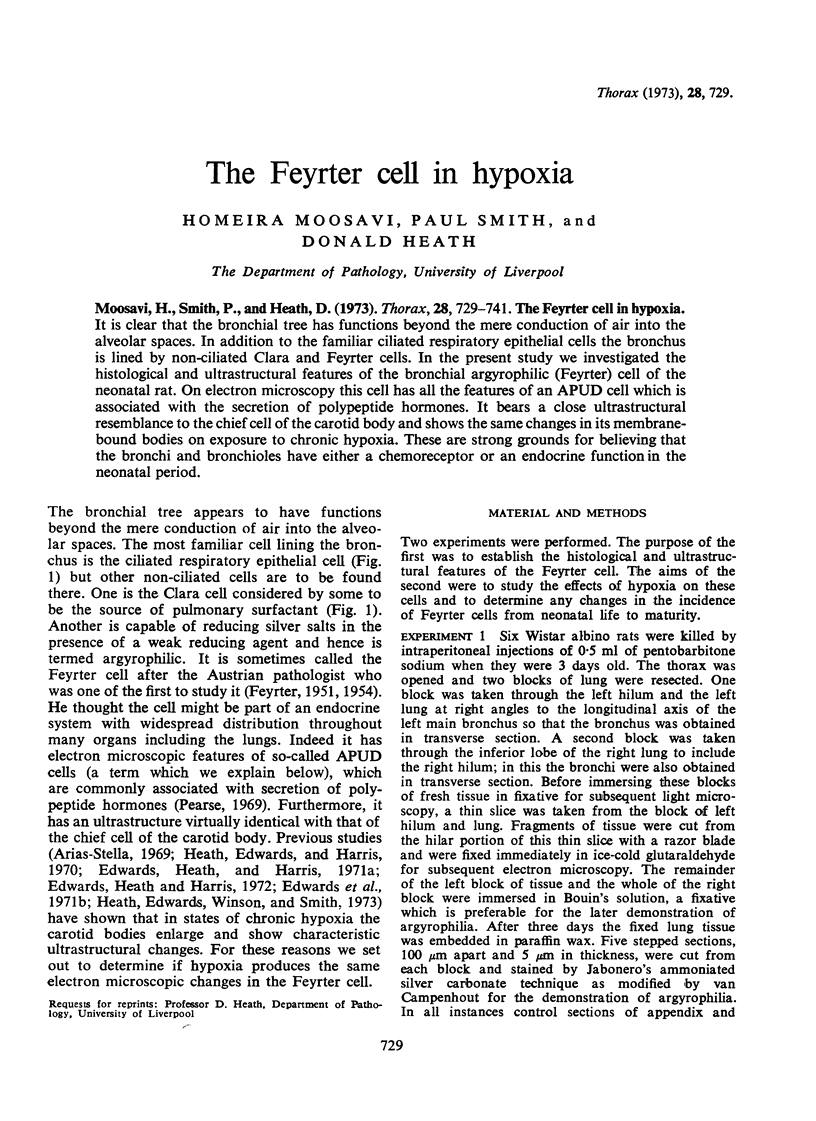
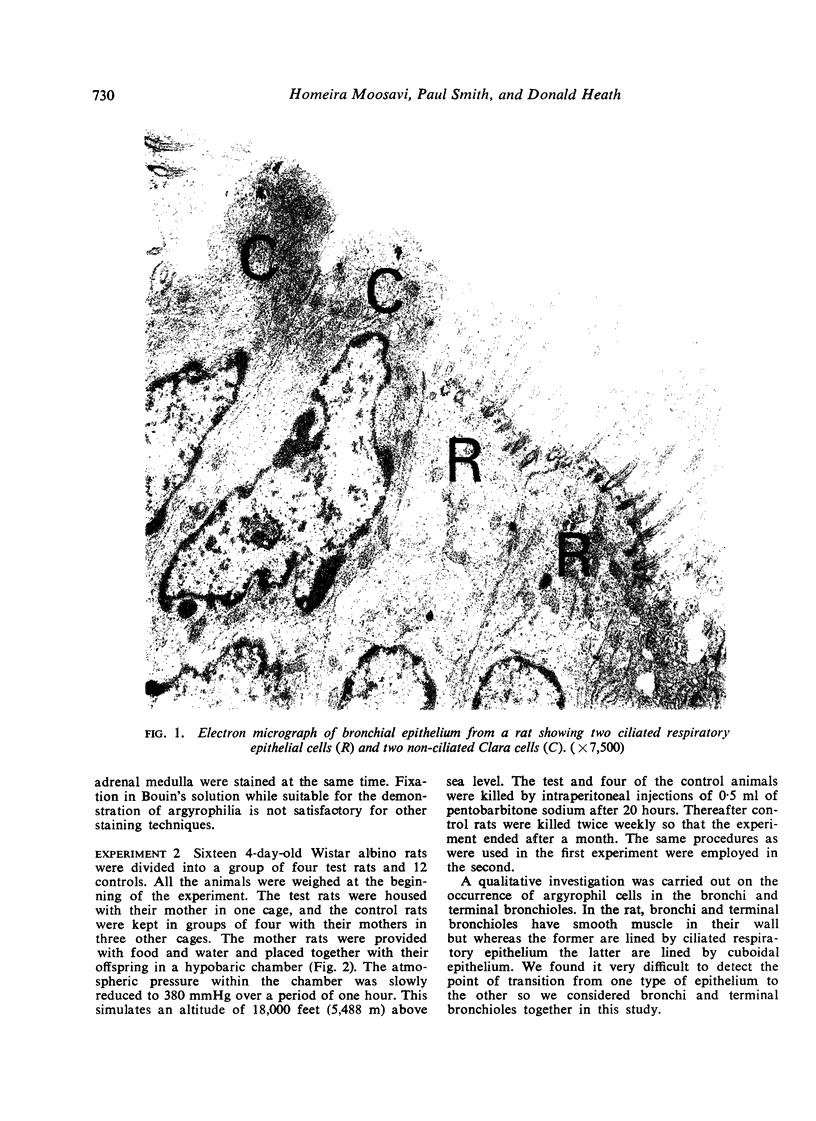
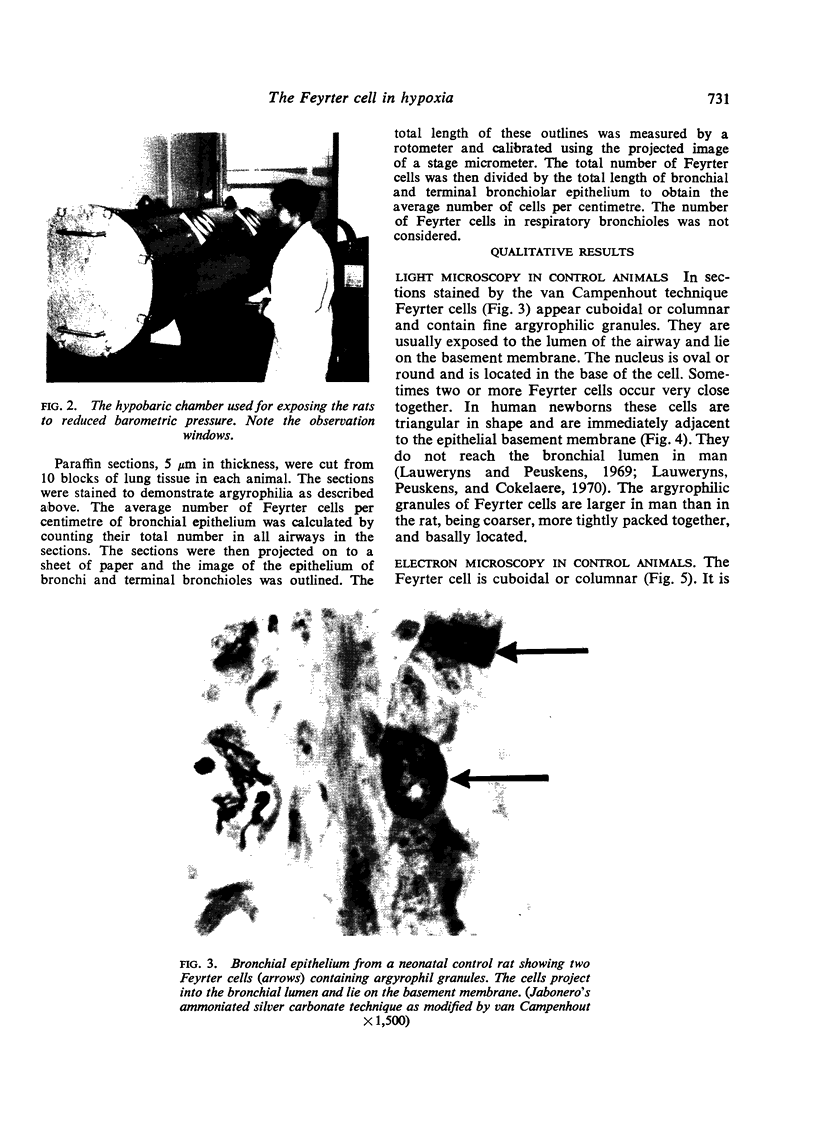
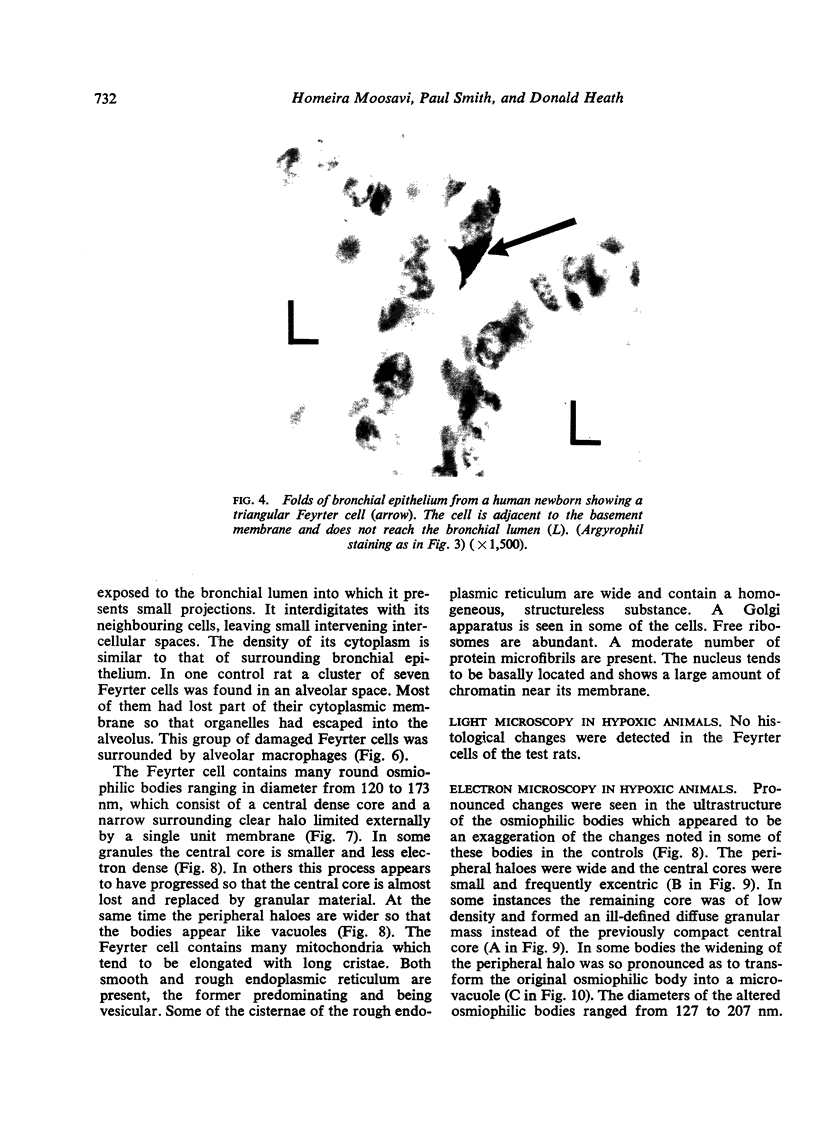

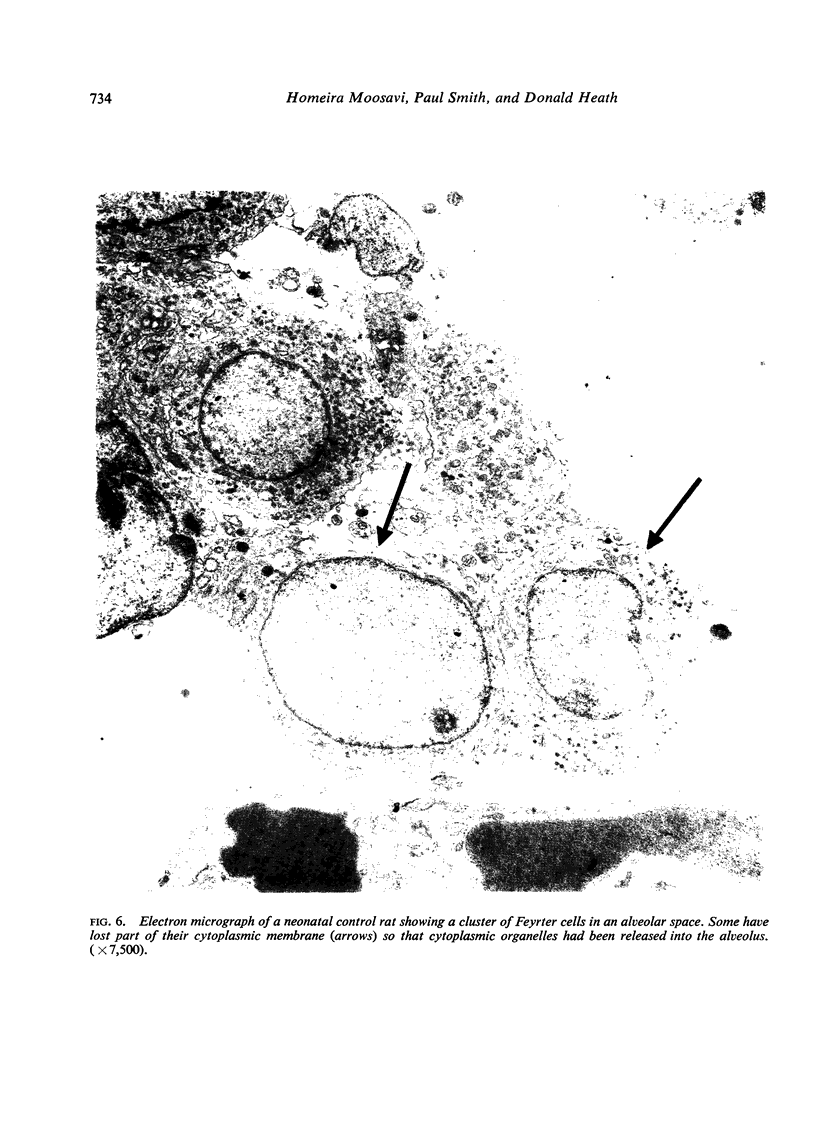
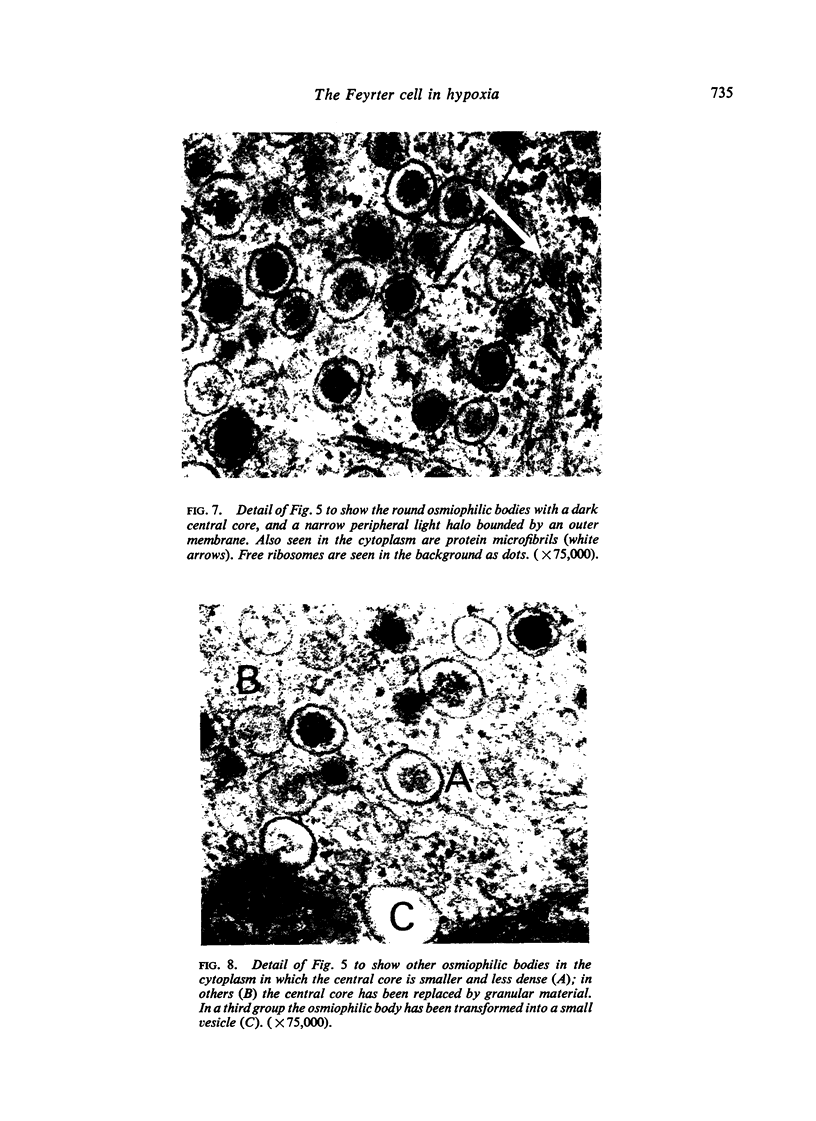
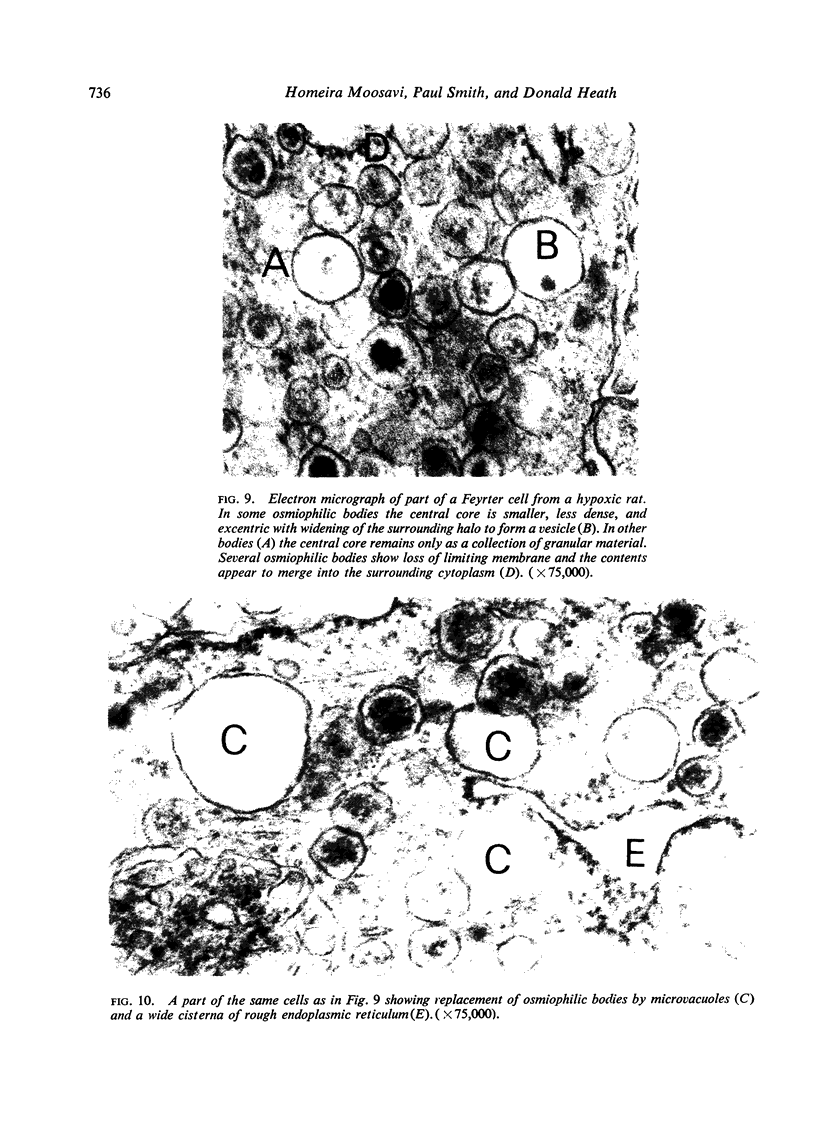
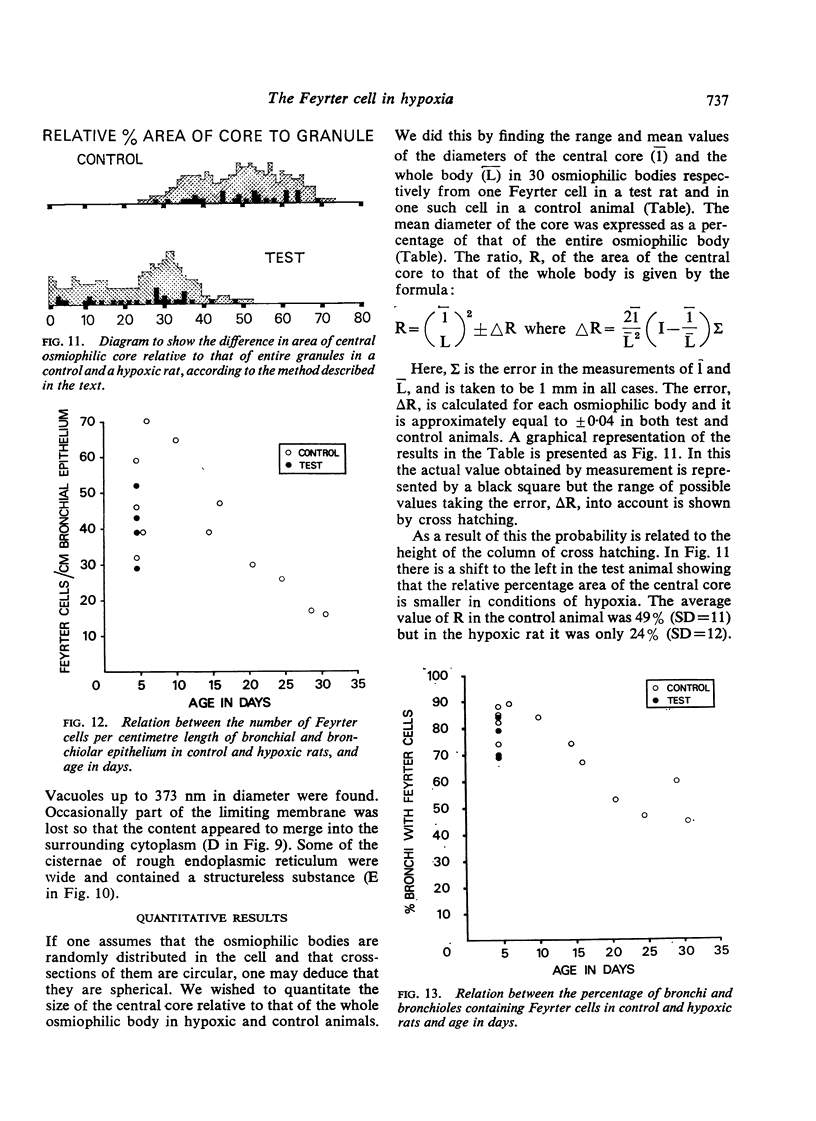
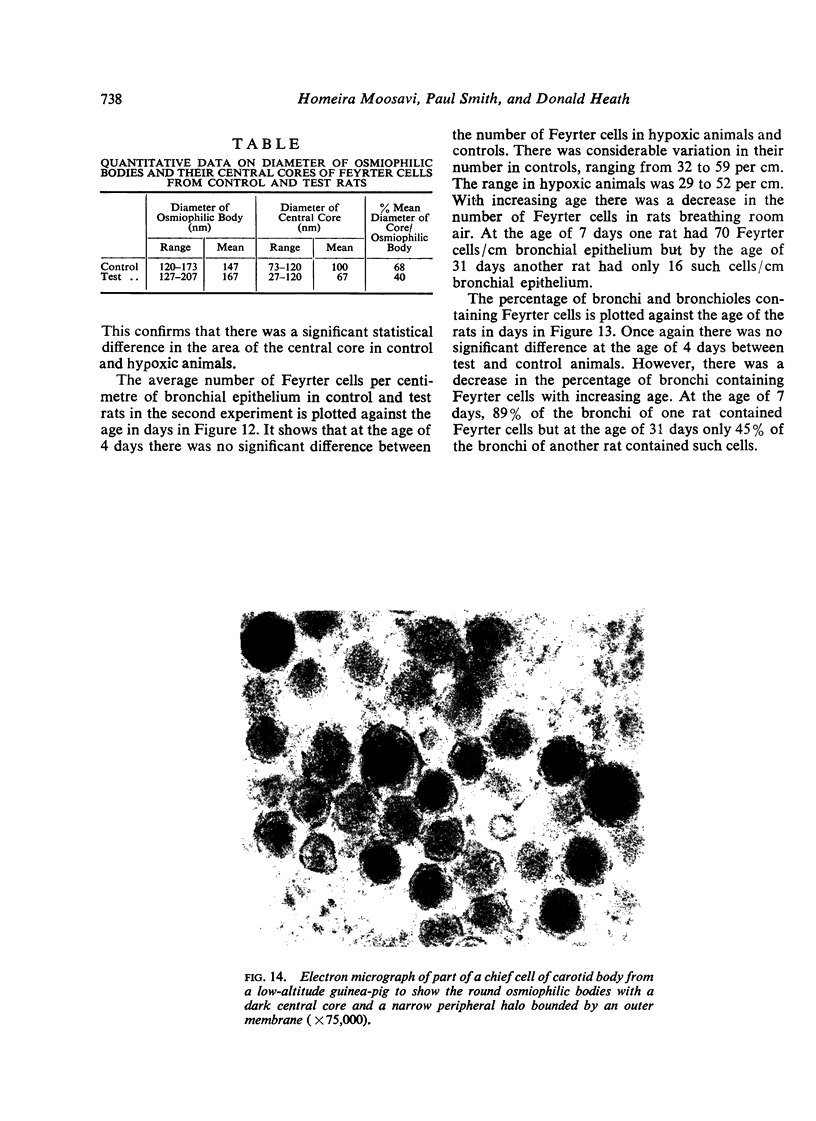
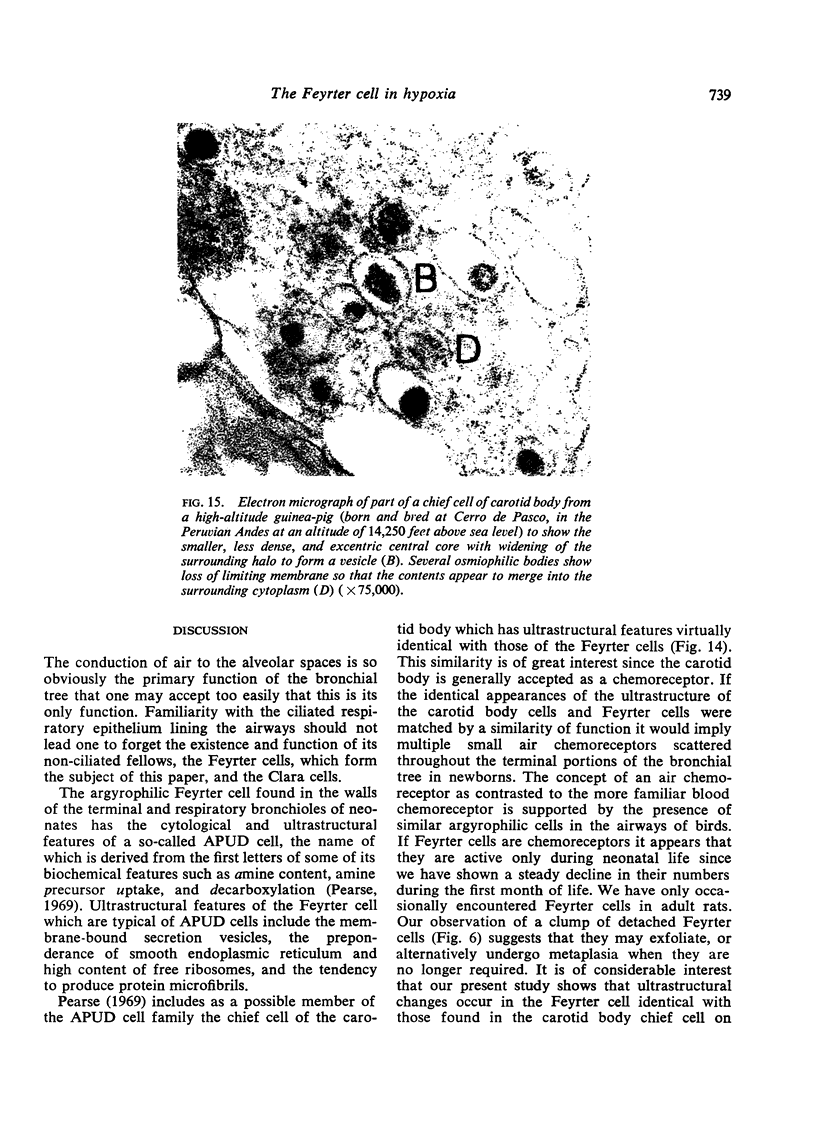

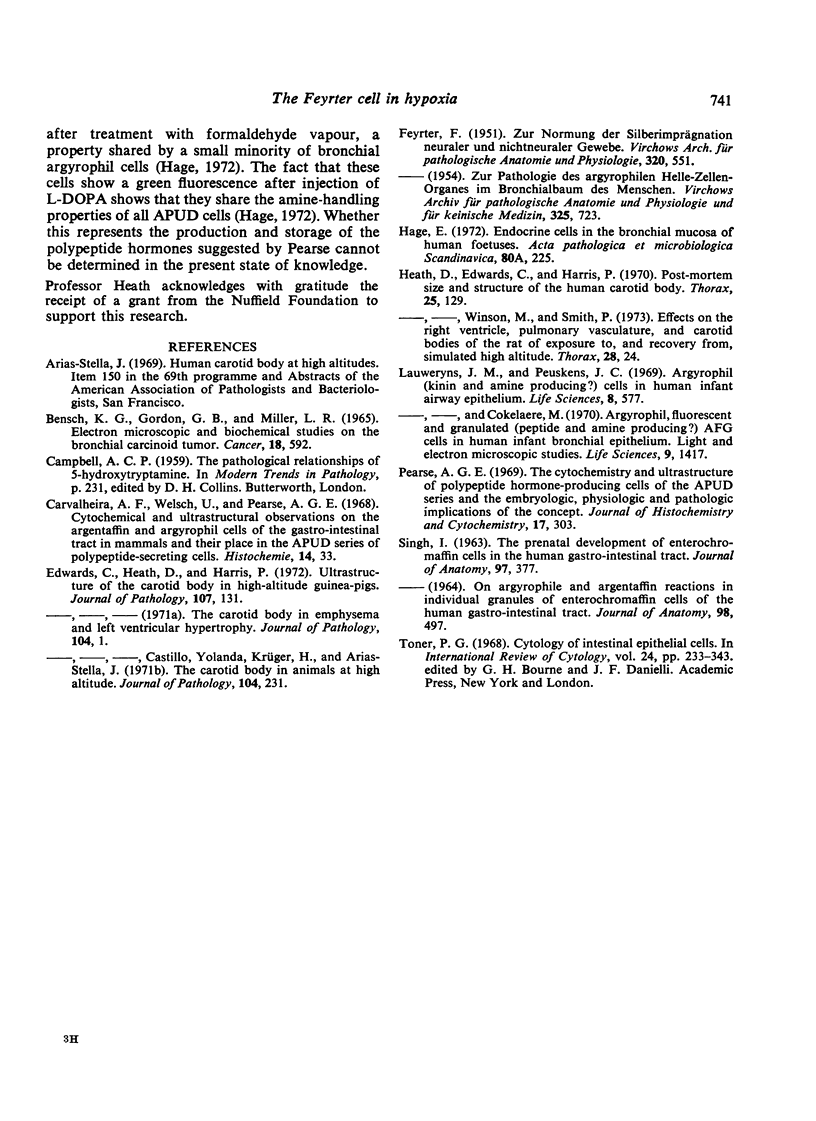
Images in this article
Selected References
These references are in PubMed. This may not be the complete list of references from this article.
- BENSCH K. G., GORDON G. B., MILLER L. R. ELECTRON MICROSCOPIC AND BIOCHEMICAL STUDIES ON THE BRONCHIAL CARCINOID TUMOR. Cancer. 1965 May;18:592–602. doi: 10.1002/1097-0142(196505)18:5<592::aid-cncr2820180508>3.0.co;2-6. [DOI] [PubMed] [Google Scholar]
- Carvalheira A. F., Welsch U., Pearse A. G. Cytochemical and ultrastructural observations on the argentaffin and argyrophil cells of the gastro-intestinal tract in mammals, and their place in the APUD series of polypeptide-secreting cells. Histochemie. 1968;14(1):33–46. doi: 10.1007/BF00268031. [DOI] [PubMed] [Google Scholar]
- Edwards C., Heath D., Harris P. Ultrastructure of the carotid body in high-altitude guinea-pigs. J Pathol. 1972 Jun;107(2):131–136. doi: 10.1002/path.1711070209. [DOI] [PubMed] [Google Scholar]
- FEYRTER F. Zur Normung der Silberimprägnation neuraler und nichtneuraler Gewebe. Virchows Arch Pathol Anat Physiol Klin Med. 1951 Oct;320(6):551–563. doi: 10.1007/BF01880688. [DOI] [PubMed] [Google Scholar]
- Hage E. Endocrine cells in the bronchial mucosa of human foetuses. Acta Pathol Microbiol Scand A. 1972;80(2):225–234. doi: 10.1111/j.1699-0463.1972.tb02169.x. [DOI] [PubMed] [Google Scholar]
- Heath D., Edwards C., Harris P. Post-mortem size and structure of the human carotid body. Thorax. 1970 Mar;25(2):129–140. doi: 10.1136/thx.25.2.129. [DOI] [PMC free article] [PubMed] [Google Scholar]
- Heath D., Edwards C., Winson M., Smith P. Effects on the right ventricle, pulmonary vasculature, and carotid bodies of the rat of exposure to, and recovery from, simulated high altitude. Thorax. 1973 Jan;28(1):24–28. doi: 10.1136/thx.28.1.24. [DOI] [PMC free article] [PubMed] [Google Scholar]
- Lauweryns J. M., Peuskens J. C. Argyrophil (kinin and amine producing?) cells in human infant airway epithelium. Life Sci. 1969 Jun 1;8(11):577–585. doi: 10.1016/0024-3205(69)90019-8. [DOI] [PubMed] [Google Scholar]
- Lauweryns J. M., Peuskens J. C., Cokelaere M. Argyrophil, fluorescent and granulated (peptide and amine producing?) AFG cells in human infant bronchial epithelium. Light and electron microscopic studies. Life Sci I. 1970 Dec 15;9(24):1417–1429. doi: 10.1016/0024-3205(70)90136-0. [DOI] [PubMed] [Google Scholar]
- Pearse A. G. The cytochemistry and ultrastructure of polypeptide hormone-producing cells of the APUD series and the embryologic, physiologic and pathologic implications of the concept. J Histochem Cytochem. 1969 May;17(5):303–313. doi: 10.1177/17.5.303. [DOI] [PubMed] [Google Scholar]
- SINGH I. THE PRENATAL DEVELOPMENT OF ENTEROCHROMAFFIN CELLS IN THE HUMAN GASTRO-INTESTINAL TRACT. J Anat. 1963 Jul;97:377–387. [PMC free article] [PubMed] [Google Scholar]
- Toner P. G. Cytology of intestinal epithelial cells. Int Rev Cytol. 1968;24:233–343. doi: 10.1016/s0074-7696(08)61401-1. [DOI] [PubMed] [Google Scholar]



